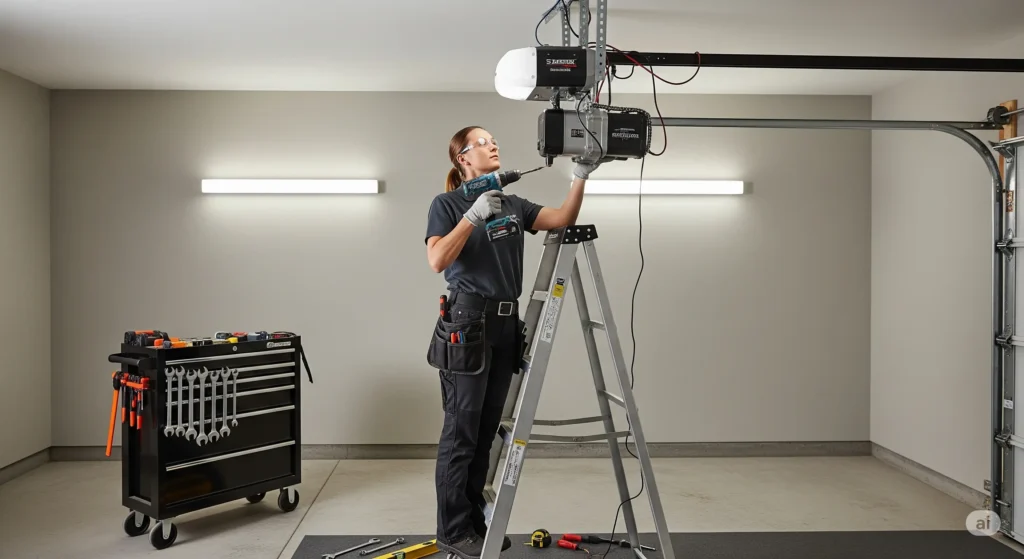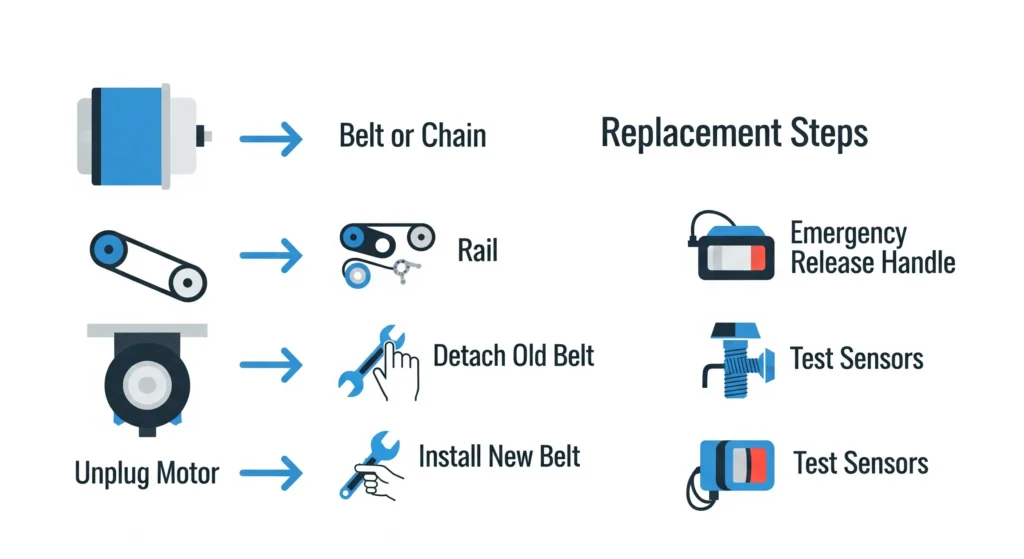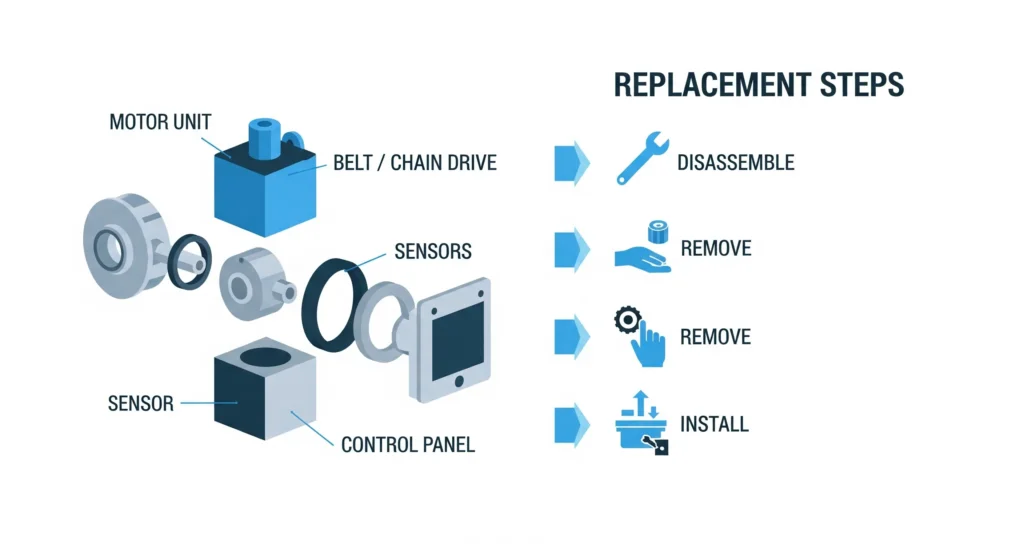Introduction to Garage Door Motor Replacement

Your garage door motor is the unsung hero of your home’s security and convenience. It works tirelessly, lifting and lowering the door hundreds of times each year. But like all mechanical devices, it eventually wears out. Garage Door Motor Replacement might sound intimidating, but with the right knowledge, you can handle it confidently—saving time and money while avoiding unnecessary frustration.
In this guide, we’ll explore how garage door motors work, the signs they need replacing, how to choose the right one, and cost-saving strategies that don’t compromise quality or safety.
Understanding the Basics of a Garage Door Motor
How Garage Door Motors Work
Garage door motors are part of an opener system that includes a motor unit, drive mechanism, remote controls, and safety sensors. When you press the opener button, the motor activates, pulling or pushing the door along a track using a chain, belt, or screw-drive mechanism.
Common Types of Garage Door Motors
- Chain-Drive Motors – Affordable, reliable, but noisier.
- Belt-Drive Motors – Quieter and smoother but more expensive.
- Screw-Drive Motors – Low maintenance but can be slower in extreme temperatures.
- Direct-Drive Motors – Minimal moving parts, extremely quiet, often pricier.
Signs You Need a Garage Door Motor Replacement
Unusual Noises During Operation
Grinding, squealing, or rattling sounds are early warnings that your motor may be failing.
Slow or Jerky Door Movement
If the door hesitates, stalls, or moves unevenly, the motor might be struggling to produce consistent torque.
Remote or Keypad Malfunctions
If you’ve changed batteries and still experience response delays or no movement, the problem may lie with the motor’s receiver or internal circuits.
Tools and Materials Needed for Replacement
- Adjustable wrench set
- Screwdrivers (Phillips & flathead)
- Step ladder
- Pliers
- Drill and drill bits
- Replacement motor (compatible with your opener system)
- Safety gloves and protective glasses

Step-by-Step Guide to Garage Door Motor Replacement
Step 1: Safety First
Disconnect power from the garage door opener before starting work. Wear safety gear to protect your hands and eyes.
Step 2: Disconnecting the Power
Unplug the opener or shut off its circuit breaker. This prevents accidental activation during work.
Step 3: Removing the Old Motor
Detach the motor from the opener assembly. Remove mounting brackets and carefully lower it from its position.
Step 4: Installing the New Motor
Secure the new motor into the mounting frame. Connect the drive mechanism (chain, belt, or screw) according to manufacturer instructions.
Step 5: Testing the New Setup
Reconnect the power and test the door. Adjust the travel limits and force settings for smooth, safe operation.
DIY vs. Professional Motor Replacement
- DIY Pros: Cost savings, flexible timing, personal satisfaction.
- DIY Cons: Requires technical skills, risk of mistakes, possible warranty void.
- Professional Pros: Expert installation, warranty protection, faster completion.
- Professional Cons: Higher upfront cost.
Cost Breakdown for Garage Door Motor Replacement
Factors Affecting the Cost
- Motor type (chain, belt, screw, or direct drive)
- Horsepower rating
- Brand reputation
- Installation complexity
Average Price Ranges
- Motor unit only: $120–$300
- Full opener system: $250–$600
- Professional installation: $150–$400

How to Choose the Right Garage Door Motor
Power Ratings and Door Size
Single doors usually require ½ HP motors, while double or heavy wooden doors may need ¾ HP or more.
Noise Levels and Speed
For attached garages, choose a belt-drive or direct-drive motor to minimize noise.
Preventive Maintenance for Long-Lasting Motors
- Lubricate moving parts every 6 months.
- Test safety sensors monthly.
- Tighten loose bolts and screws.
- Keep tracks clean and free from obstructions.
Common Mistakes to Avoid During Replacement
- Skipping the user manual
- Ignoring safety precautions
- Choosing an underpowered motor
- Forgetting to align safety sensors
Safety Precautions and Best Practices
- Always disconnect power before working.
- Use proper tools for each task.
- Avoid working alone on heavy doors.
- Test all safety features after installation.
FAQs
Q1. How long does a garage door motor last?
A. Typically 10–15 years with regular maintenance.
Q2. Can I replace just the motor without changing the entire opener?
A. Yes, if the opener system is otherwise in good condition and compatible with a new motor.
Q3. How do I know if my motor is underpowered?
A. If your door moves slowly, strains, or stops mid-lift, it might need a higher horsepower motor.
Q4. What’s the quietest garage door motor type?
A. Belt-drive and direct-drive motors are the quietest options.
Q5. Do I need a professional to install a garage door motor?
A. Not necessarily, but professionals ensure safe, correct installation.
Q6. Can extreme weather affect my garage door motor?
A. Yes, especially screw-drive motors, which may slow down in very cold temperatures.

